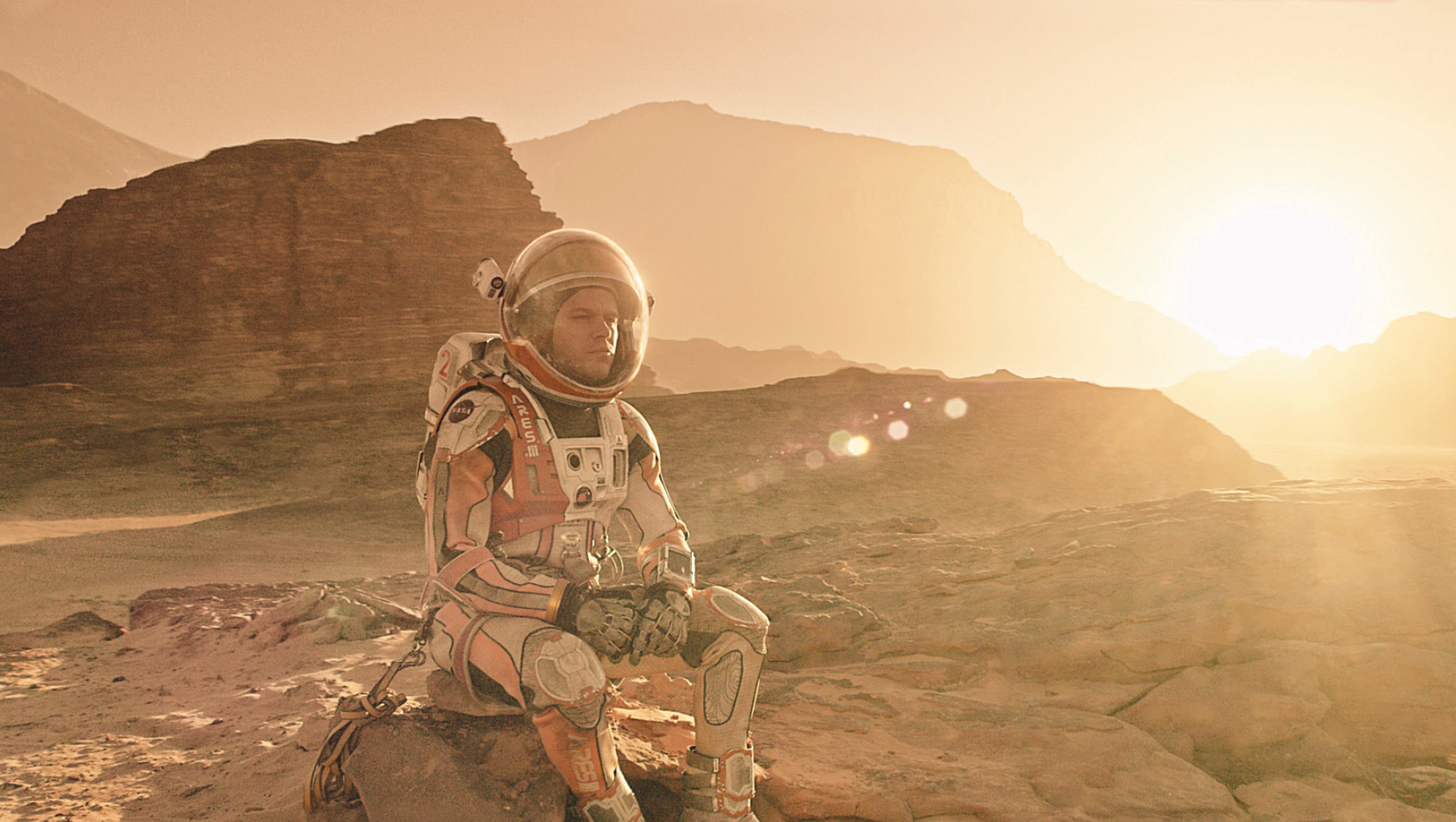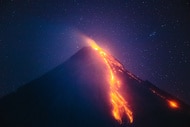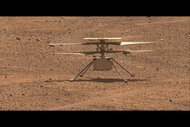Create a free profile to get unlimited access to exclusive videos, sweepstakes, and more!
The Martian author Andy Weir & NASA agree: Colonize the moon first, then put people on Mars

As badly as countless stargazers (including Elon Musk) want to get human beings to Mars as soon as humanly possible, even the guy who wrote The Martian believes that establishing a permanent lunar presence is too important a springboard step to skip.
In a fascinating convergence of sci-fi and real-life space science, author Andy Weir and NASA scientist C. Alex Young pretty much agreed: the moon has to come first for a whole host of reasons — but at the end of the day, the biggest is because it’s just so darn close.
“I would say that Mars is way easier to deal with if — it weren’t for the distance,” said Weir, whose followup novel to The Martian, 2017’s Artemis, explores a fictional crime story once mankind has put down permanent roots on the lunar surface. If Mars and the moon were the same distance from Earth, he explained, “it would be way easier [to reach] than the moon.”
Hosted by the Museum of Science Fiction as part of its Escape Velocity Extra webcast series, Weir and Young met on the eve of NASA’s historic Mars Perseverance launch to talk about the agency’s Artemis lunar program, which aims to return humans to the moon by 2024. The sci-fi fan in each of them came out when asked whether they’d like to bypass the moon altogether and shoot straight for the Red Planet. But their practical, patient sides emerged when talking about the incredible challenges a crewed trip to Mars actually poses.
Exposure to cosmic radiation, communication over vast distances, timing missions to sync with the Sun’s coronal mass ejections, and the sheer time involved in making the journey all present enormous challenges to humanity’s Martian ambitions, said Young. Even if all the technology were in place, “the distance; the time is a huge thing,” he said. “We can get to the moon in a relatively short period of time…but if you’re on Mars, you’re on your own — and the time to communicate back and forth is incredibly long.”
That’s a real shame, said Weir, because almost everything else about Mars makes it a much more hospitable target for back-and-forth travel. “I would say that Mars is way easier to deal with, if it weren’t for the distance,” since life on the actual surface would be shielded by an atmosphere, a stronger gravitational pull, and a more diverse matrix of planetary resources.
Both Weir and Young said humanity could soon reach a turning point in our understanding of space, as well as in developing the basic tools to reach farther without contending with Earth’s notoriously difficult atmospheric and gravitational challenges, by following through with NASA’s Artemis program and making human colonization of the moon a permanent reality.
“At least from a science point of view, the moon offers a unique platform to do science,” said Young. “…This is one of the things that scientists like myself are super excited about — the moon as a platform for doing science is really a game changer,” a step that Young predicted would surpass the present age of Earthbound observatories and major uncrewed exploratory forays like the Hubble Space Telescope and the James Webb Space Telescope.
As the private sector gets more involved in helping lower the cost of setting up shop on the moon for good, humanity may also be entering an era in which real people will be willing (and, more importantly, able) to shell out real dollars for the chance to escape Earth’s confines — and that, said Weir, will only accelerate the timeline for solving all the riddles that stand between the Earth and Mars.
“Driving down the price to low Earth orbit is key. My entire book, Artemis, is based on kind of the presumption that [it] can be driven down substantially,” said Weir, adding that he believes humanity is closer than ever before to reaching the tipping point — as the aviation industry did in only a few decades’ time — when “that cost can get a lot lower than it is now.”
Set in the late 2080s, Weir’s sci-fi novel Artemis follows the life of smuggler Jasmine "Jazz" Bashara as she gets caught up in a conspiracy for control of the eponymous lunar city. Artemis comes in the wake of Weir’s debut 2011 novel The Martian, which Ridley Scott adapted into a 2015 feature film starring Matt Damon, Jeff Daniels, Chiwetel Ejiofor and Jessica Chastain.














